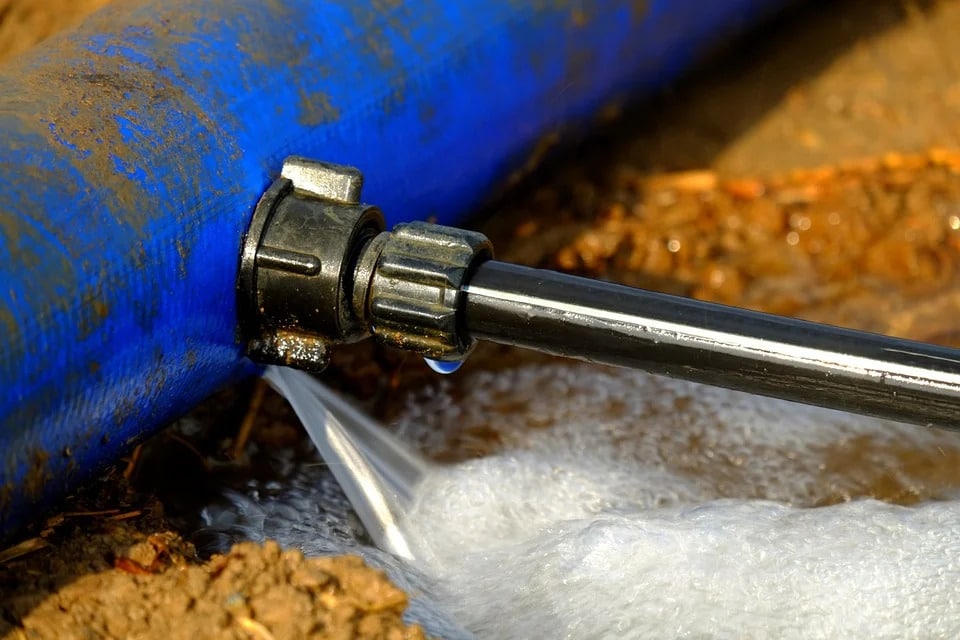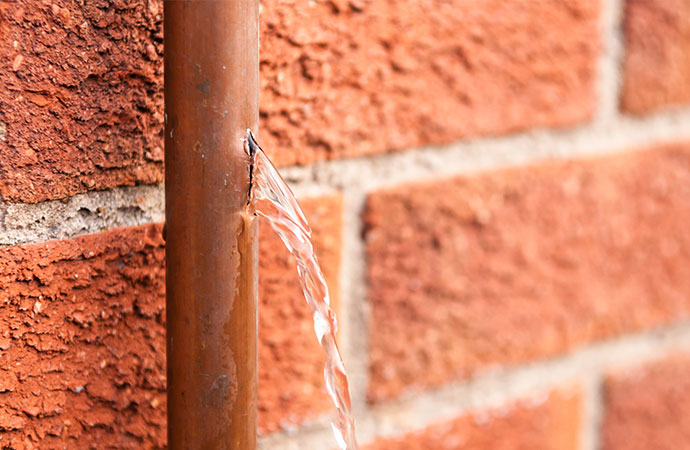Dealing With Flood Damage After a Water Pipe Burst - Step-by-Step Instructions
Dealing With Flood Damage After a Water Pipe Burst - Step-by-Step Instructions
Blog Article
The article which follows on the subject of Quick Tips To Help Deal With Water Damage is rather stimulating. You should take a look.

What should you do if a water pipe ruptureds in your house? The longer you wait, the extra severe the damage that can happen to your home. For these factors, you require to learn exactly how to act in the event of a burst water pipe.
Shut Off the Key Waterline Shutoff
Look for the regional shut-off shutoff to transform off the water in one certain location just. If you do not recognize where the local shut-off valve is, go for the main water line valve and also transform it off. Normally, the primary valve is found outside the residence following to the water meter.
Call Water Damage Remediation Pros for Aid
After closing the water source, call the specialists for assistance. Since the pipelines needed to be taken care of and also there is a requirement to address the various other problems to your property, this situation is not something you can do some DIY. Look for help from a respectable business using 24/7 emergency solutions if you can not deal. With their specialist aid, you can protect against a lot bigger water damage including distorted baseboards, loosened tiles, or damaged frameworks. Do not take this problem lightly as well as look for specialist guidance for your complete comfort and also a credible remedy.
Paper the Damages For Insurance policy
While you're waiting for the pros to arrive, get some documents of the damages triggered by the errant pipeline. Do close-up shots of the harmed areas as well as valuables.
Salvage Points That Can Be Saved
Examine the harmed products and also take out the most important ones from the pile once you're done taking photos. Dry them off in a dry/warm place far from the broken area and also try to maintain them as much as you can. Drag as much wetness as you can to the product so it can start to dry out.
Start the Drying Process
You need to begin the drying out procedure as soon as possible. Luckily, the water from your waterlines is currently tidy so you do not need to worry about sewer water. Nevertheless, the streaming water may have disrupted the dust as well as debris in your floorboards and carpets. In this situation, put some gloves on as well as start some damage control. Use containers to unload out the water. Blot out as much water as you can from the surfaces with old towels. Switch on an electrical fan or open your home windows to advertise air blood circulation. These actions will accelerate to dry as well as hinder mold and mildew development.
Professionals are the only individuals qualified to analyze correctly and fix the burs pipelines and subsequent damage. As always, pipelines don't just unexpectedly burst out of heaven. They generally offer silent warnings like bubbling paint, water discolorations. Weird noises in the plumbing, caving ceiling, musty smell, or peeling off wallpaper. Keep in mind of these signs and also do some safety nets so you can nip any kind of problems in the bud.
What should you do if a water pipe ruptureds in your home? For these reasons, you need to find out how to act in the event of a burst water pipe. After closing the water resource, call the professionals for assistance. With their professional assistance, you can prevent much bigger water damage including deformed walls, loose ceramic tiles, or damaged frameworks. Thankfully, the water from your waterlines is already tidy so you do not have to fret regarding sewer water.
BROKEN WATER PIPES: COST TO REPLACE & WAYS TO FIX A PIPE
CAUSES OF A BROKEN WATER PIPE
A water pipe can break for several reasons depending on the environment you live in, type of pipe, and circumstances.
The most common cause of broken pipes is freezing. If you live in a colder climate, this could happen. When water freezes it increases in volume by 9% and the pressure in the pipes can go from 40 psi to 40,000 psi. Clearly, this could be detrimental to the pipes. Water freezing causes quick expansion, which puts stress on the pipes and could lead them to crack or weaken. When water thaws, it will leak out the cracks. Other changes in water pressure can also cause breakage. Another common cause of broken water pipes is age.
Depending on the material, water pipes can last anywhere from 70-100 years. But the older they get, the more susceptible they are to weakening and corroding. Older pipes coming into contact with another material could speed up the corrosion process as well. PVC pipes can become brittle with age, while copper is prone to corrosion and stress over time. Something that could also potentially break water pipes is when they move. They may move from construction or the house settling. Moving can stress the fixed pipe which may lead to a leak or burst pipe.
HOW MUCH WATER COULD LEAK INTO YOUR HOUSE FROM A BROKEN PIPE?
The amount of water that leaks depend on how big the break in a pipe is. If it is just a minor crack, water will slowly leak out. This isn t as serious as a full broken pipe, but it can still cause significant damage to your home. Burst pipes can leak up to 10 gallons of water per minute. The amount of water leaked also depends on what appliance is involved. The water line to your refrigerator can leak to 1 gallon per minute depending on water pressure. One toilet supply line may leak 2-3 gallons a minute and a washing machine hose will leak up to 10-12 gallons per minute.
TURN THE WATER OFF
Doing this first is imperative; everything else can wait. You need to deactivate the water supply to stop the flow of water and prevent more water from leaking into your home. Shutting off the water could potentially save you thousands in water damage repairs. Locating the water shutoff valve depends on the climate you live in. For colder climates, the valves are usually inside, such as in the basement. For houses in milder weather, the shutoff valves will probably be outside either attached to an exterior wall or in an underground box with a removable lid.
OPEN A FAUCET
The next thing to do is to open a faucet or turn on a sink. This will relieve any remaining water pressure in the pipes and ensure a full-shut down.
GET RID OF THE WATER
The quicker you get rid of the water, the less water damage and mold there could be. Use a mop and a shop vacuum to help get clean up the water. Use towels to dry everything the best you can.
CUT AND REMOVE THE DAMAGED PIPE
Once you have shut off the water and drained the damaged water pipe, you can begin to fix the issue. Cut out the damaged section of the pipe with a pipe cutter, ensuring that you also cut one inch extra on each side of the damage. Once you get rid of the broken part of the pipe, you may begin repairs.
https://www.wmhendersoninc.com/blog/broken-water-pipes-cost-to-replace-ways-to-fix-a-pipe/

I discovered that content on Do s And Don ts For Homeowners Managing With Water Damage while doing a lookup on the internet. Appreciated our write up? Please share it. Let another person find it. Thank you for taking the time to read it.
Best fix? Dial! Report this page